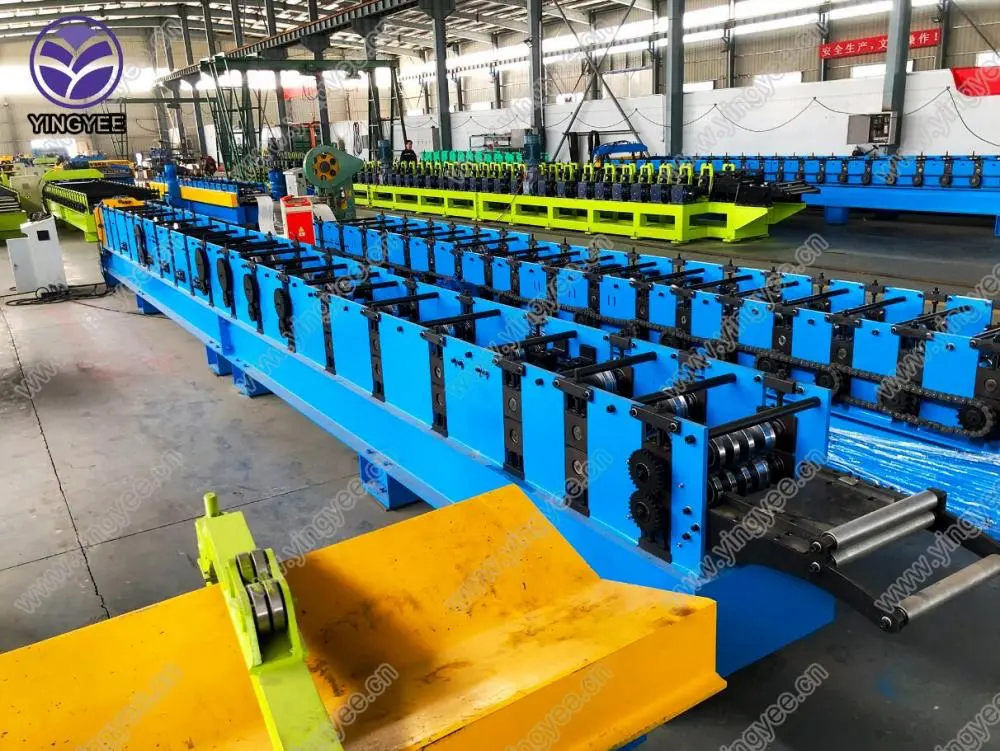
Fully Automatic Cable Tray Cold Roll Forming Revolutionizing Electrical Infrastructure
In today's fast-paced industrial landscape, the demand for efficient and reliable manufacturing processes has never been more critical. One area that has seen significant advancements is the production of cable trays, essential components for organizing and supporting electrical wiring in buildings, plants, and various infrastructures. Enter the fully automatic cable tray cold roll forming system—an innovation that not only enhances production efficiency but also ensures high-quality output.
What is Cold Roll Forming?
Cold roll forming is a manufacturing process that utilizes continuous bending of flat metal sheets or strips to create complex cross-sectional shapes. At room temperature, metal is rolled into a desired shape without the need for heating, allowing for better dimensional accuracy and surface finish. This method is particularly well-suited for producing cable trays, as it offers strength and durability while minimizing material waste.
Advantages of Fully Automatic Systems
The fully automatic cable tray cold roll forming system combines advanced technology with user-friendly interfaces, leading to several advantages
1. Increased Production Efficiency With automation, these systems can operate continuously with minimal human intervention. This not only expedites the manufacturing process but also maximizes output. A fully automated line can produce thousands of meters of cable trays within a short period, significantly reducing delivery times.
2. Consistent Quality Automation ensures that every cable tray adheres to strict quality standards. Modern systems are equipped with sensors and computer controls that monitor the forming process in real-time, minimizing defects and ensuring consistency across products. This results in a reliable product that meets the rigorous requirements of electrical installations.
3. Reduced Labor Costs By minimizing the need for manual labor, companies can reduce overall production costs. Workers can focus on quality control and other essential tasks rather than getting bogged down in repetitive manual processes. This not only leads to savings but also allows companies to allocate resources more effectively.

4. Flexibility and Customization Fully automatic systems often come with programmable features that allow for easy adjustments to produce a variety of cable tray sizes and designs. This flexibility enables manufacturers to cater to specific customer needs without extensive downtime for equipment changes.
5. Eco-Friendly Production The cold roll forming process is inherently more environmentally friendly than other methods, such as hot forming. The absence of high-temperature operations reduces energy consumption and lowers the carbon footprint of production.
Applications of Cable Trays
Cable trays produced through cold roll forming processes are widely used across various industries, including
- Construction In residential and commercial buildings, cable trays facilitate the organization of electrical wires, ensuring safety and accessibility for maintenance. - Manufacturing Industrial plants often require extensive cable management systems to carry electrical wiring across machinery and equipment. Cable trays help in maintaining an orderly and efficient workspace.
- Data Centers With the ever-increasing demand for data processing and storage, cable trays are essential for managing the complex network of wires in data centers, promoting airflow and reducing overheating risks.
- Telecommunications In the telecom industry, cable trays support the vast array of cables used in communication systems, ensuring they are organized and protected from damage.
Conclusion
The fully automatic cable tray cold roll forming system represents a significant leap forward in manufacturing technology. With its myriad benefits, including efficiency, quality consistency, and environmental sustainability, this innovative process is set to redefine how cable trays are produced and utilized in various sectors. As industries continue to evolve and expand, embracing such advanced manufacturing solutions will undoubtedly play a crucial role in meeting future electrical infrastructure demands.